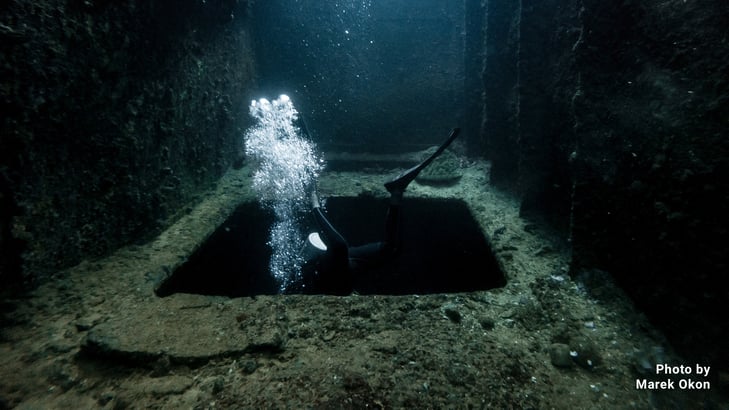Identifying Waste and Workarounds to Improve Your Process
Let's cover a few techniques that can help you evaluate your own process, and hopefully help you learn something about your studio and continuously improve it.

Here's a brief overview:
- Communication — If you want to do it right, your stakeholders need to be involved.
- Observation of the Process — This is where you identify possible waste or workarounds.
- Deep Dive Trouble Areas — Find the root cause.
- Brainstorm New Ideas — Identify possible solutions.
- Implement and Test — Determine if your solutions work and identify unintended impacts.
- Re-evaluate — Take a step back and gather feedback.
Communication
The most important part of any evaluation of a process or implementation of a continuous improvement plan is communication. Top to bottom, all parties involved, anyone who touches the process in any way, no exceptions. Every single team member in your space not only needs to be aware of this effort but actively involved in it. I include freelance talent in this as well. If they work in your studio, they’ve interacted with the existing process. If you’ve chosen your team well, they will have ideas on how it can be improved and have insight into wasteful steps.
Without clearly communicating the goals behind the process review up front, you risk your team misunderstanding the intention behind it. In turn, it can be mischaracterized as a reaction to some incorrect behavior or actions and potentially alienate the people responsible for doing the work. I can’t stress the importance of this enough. It is much more difficult to change your team’s negative opinion of a project than to set the proper expectation up front.
What is the expectation? It’s pretty simple: Make the process work better. Remember that you are not only interested in making the process work better for the Company, but making the process work better for the Employee. A process that works better for the employee will also benefit the company, but the reverse is not always true. Focus your efforts on building a better process for your team, and reap the benefits as a company. The only way to build a better process for your team is for the team to be involved and empowered to build a better process for themselves.
The only way to build a better process for your team is for the team to be involved and empowered to build a better process for themselves.
Observe the Current Process
You’ve had your kick-off meeting and everyone involved is aware that the current studio processes are going to be reviewed. What’s next? Now you need to observe the process in its current state. There are many ways to tackle this, from simply walking through the process and talking to the stakeholders, to evaluate data related to the process, to strapping a GoPro camera to a sample and reviewing the footage later. I recommend looking at the existing process in as many ways as are available to you, but I’m going to talk here about walking through the process and talking to stakeholders.
Start at the beginning. The very, very beginning. Who in your studio is responsible for coordinating samples before they arrive? Start there. Ask them about what they do and watch them do it. Once you have your starting place, follow the samples, follow the assets and follow the data. Make notes about your findings as you go.
Here’s what you’re looking for:
- First and foremost, seek to understand the process holistically. You will be tempted to solve as you go, but resist that urge. Focus on understanding the whole process, front to back, and down every alley and avenue.
- Keep an eye out for clues to workarounds and red flags that something doesn’t work the way it should. Look for things like stakeholders having to use a certain workstation because of “x, y, z.” Even something as simple as “I can’t print barcodes from this check-in station,” means that something in your process isn’t working the way it should.
- Look for mistakes. Mistakes sometimes may just be mistakes, but they may also arise from a part of the process that is unnecessary or confusing. *See below for an anecdote about this.
- Pay attention to your steps. As you’re following samples throughout the studio, how much are you moving between functions? Is it too much? Some amount of “empty” space to accommodate racks and samples will be required, but take time to evaluate it.
- Pay attention to the steps of others. Especially watch your photographers on set. Do they have the tools they need, ideally within arms reach? Or are they constantly hunting around for something?
Once you’ve observed the current process and have made notes about potential weaknesses, work-around and non-value added steps, it’s time to deep dive.
Deep Dive Trouble Areas

While there are many ways to analyze a potential trouble area, one of my personal favorites is using the “Five Whys.”
Five Whys is an iterative technique for drilling down beyond how a problem presents itself to determine an actionable root cause. There are a ton of resources on this and other lean techniques that go more in-depth, but we can see how it works by using our example above.
Problem: I cannot print a barcode label from this workstation
Why? Because the printer doesn’t work
Why? Because the computer doesn’t recognize the printer
Why? Because the software needs updated - Tada! We’ve found the root cause
In this case, it only took us three whys, but you get the point. When it is the right tool for the job, it helps cut through the human influence around a problem in your process and gets down to something actionable.
As with all parts of this process, it is vitally important that you engage all stakeholders in this review. They will have the answers to the initial “why’s” and should be solicited for input on solving the root cause. Once you have identified trouble areas and root causes, it’s time to discuss corrections!
Brainstorm Solutions
In this step, we want to continue to engage the stakeholders in our process because this is where bottom-up ownership of the process really starts to solidify. The role of studio leadership in this step becomes more of a mediator than an outright decision maker and it’s important to facilitate meaningful conversation about the solutions. Some solutions will be really obvious, like updating printer software from our example problem, but some ideas to solve the problem may be more invasive, like moving an entire set or changing how a role operates.
I’m a believer that nothing is sacred when it comes to process improvement, but that does not mean I am not sensitive to the feelings and desires of my team, as there may be some emotional reactions to some solutions. Again, effective communication is key to helping your stakeholder's comfort level with some proposed changes.
Once your potential improvements are identified, let’s implement them and run a test.
Implement Your Solutions
Before we dive into this section, here is that anecdote I promised earlier:
* I was new to a studio that shot tons of handbags. Each set was designed to shoot all tabletop shots of the bags as well as an overhead shot, to show the customer the inside of the handbag. While shadowing another photographer on one of these sets, I noticed that several times throughout the day the photographer would adjust the lights to shoot the overhead shot. Then they would move on to the main shot of the next bag and shoot it with the wrong lighting, used for the previous shot. Most of the time they would realize their mistake, adjust the lighting and reshoot the main shot.
I also noted that in order to adjust the lighting, the photographer had to bend down and reach underneath the shooting table to toggle packs on and off and adjust some settings. After some ideation and testing, I found that we could reconfigure the power packs and camera syncing so that the overhead shot would only trigger the lights it needed, while the main tabletop shots were unchanged. We tested this idea on one set and rotated various photographers through this set. The solution was universally praised by those who tested it and we rolled it out to all other handbag sets. This solution not only prevented images with the wrong lightning from being made (good for the company), the photographer no longer had to bend and reach something like 80 times per day (good for the employee).
In this situation, a critical part of this process improvement (and all other process improvements) was testing. We wanted to test not only the change itself, but expose several different photographers to the change to get diverse feedback from multiple perspectives. It was critical that we engage many on the team in evaluating so that we could not only determine the effectiveness of the solution but make it clear that we are trying to act in the interest of a good process that works for everyone. This story illustrates a relatively small change, but that won’t always be the case. Sometimes it’s a MASSIVE change and you want to send the message loud and clear that it is in the interest of improving the process for everyone.
Re-Evaluate
If it fails, learn your lesson quickly and go back to brainstorming or make sure you drilled down to the true root cause of the problem.
This is where we determine if our solutions not only solved the root cause of our problem but if they created any issues or unintended impacts on other processes.
Now, it may not be a deal breaker for the solution if it DID impact some other process. Those problems should be evaluated on their own. Back to our workstation example: If upgrading the printer software fixed the printer but caused the scanner to stop working, would you roll back the printer software? Or would you try to determine the root cause and solve the new problem?
The key here is to Fail Fast. You could probably write another entire article on this idea alone (hint.) but the concept is just as it sounds: If it fails, find out fast and try something else. There aren’t a lot of one-way doors when it comes to process changes, so be willing to try things. If it fails, learn your lesson quickly and go back to brainstorming or make sure you drilled down to the true root cause of the problem.

Final Thoughts
This is only scratching the surface of implementing process improvements in a photo studio, but you can find lots of great resources on the internet to help flesh out some of the ideas here. In the end, there is great value in evaluating your process from top to bottom and it comes with great opportunities to engage your team in something beyond their day-to-day. Just remember, communication is key. Operate with transparency to all stakeholders and you will be rewarded with a strong, engaged team and a process that was improved for the good of the employee and the company.
→ Further reading: What is Creative Operations? A complete definition and guide!
Just remember, communication is key. Operate with transparency to all stakeholders and you will be rewarded with a strong, engaged team and a process that was improved for the good of the employee and the company.


